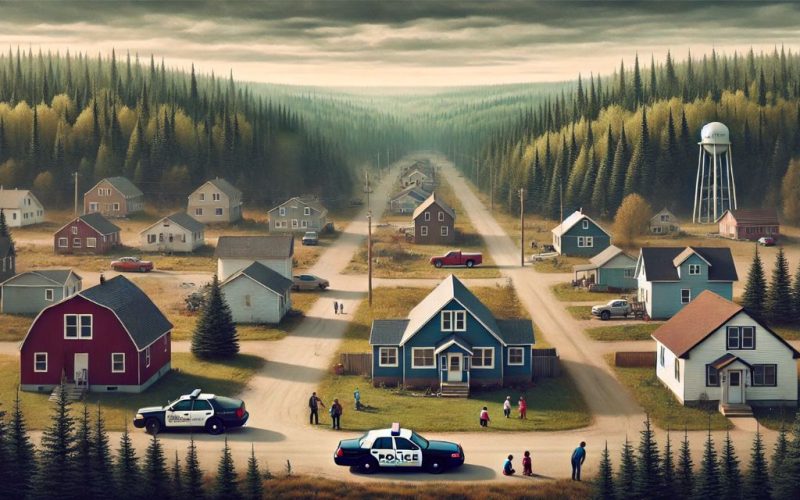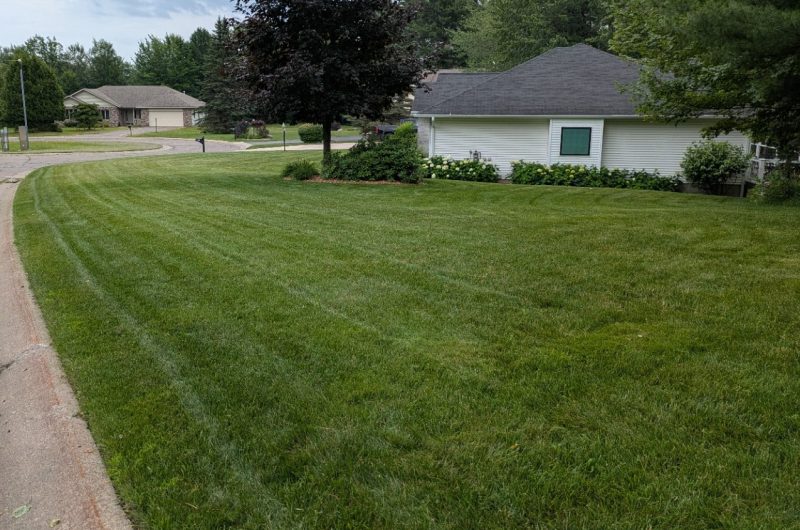Beyond the Bubble: Perceptions of Drug Crime in Michigan’s Upper Peninsula

We are publishing this article by Tristin Smith, a research assistant at the University of Michigan’s Center for Local, State, and Urban Policy (CLOSUP).
This article is part of a series from the “CLOSEUP on the UP” project, a collaboration between CLOSUP, U-M’s UP Scholars Program, and Rural Insights.
Tristin is part of the UP Scholars program at U-M, a team of undergraduate students from the Upper Peninsula who graduated from UP high schools and now attend U-M. They are using CLOSUP survey data, with a particular emphasis on the responses from over 130 local governments in Michigan’s Upper Peninsula who respond each survey wave, to look at issues important to their home region and analyze the insights of the UP’s local government leaders.
For the first 18 years of my life, I lived in what I would call an isolated community.
I have experienced a certain stigma attached to growing up in the Upper Peninsula. It usually relates to the limited resources that are available. It almost feels as if you are in a bubble from the rest of the world, but you’re living on the outside of the bubble. You truly see how isolated communities can be. There were students at my high school who had never been to the Lower Peninsula, only a 30-minute drive away from where we lived.
When I tell people that I am from the UP, they are always a little shocked and intrigued. I have been asked about whether or not we have the internet “up there.” Seriously, in 2024 I have been asked this question.
This National Geographic page highlights the top sights of the UP. The summers there are flooded with tourists and the economy is beaming, but in the dead of winter, nothing masks the harsh reality of these rural communities.

Pictured Rocks | Photo Courtesy of Stacey Cook, National Geographic
One community over from where I grew up is where the majority of students who go to my home-town school live. There are three state prisons there, and most affordable housing in the area is located closest to the prisons. Many of my classmates relocated to the area due to a parent or family member being located in one of these prisons. My UP community, and surrounding communities, have been impacted by the criminal justice system for as long as I can remember. Prison proximity in my area directly relates to drug usage and drug crimes.
Bridge Magazine recently released an article discussing the crime rates in the state of Michigan and across the United States, noting that violent crime is prevalent across the state. I have seen the impacts firsthand in UP communities. As the article discusses, how you view the severity of a problem is all about perspective. There is more than one way to measure crime, and many crimes go unreported.
In the Spring of 2024, the University of Michigan’s Center for Local, State, and Urban Policy (CLOSUP) conducted a statewide survey on criminal justice and policing issues. Local government officials were asked about whether they believe crime overall is a problem in their communities. It also asked about specific types of crime, including drug crime. While there wasn’t much difference in concerns this year about overall crime levels, the difference in answers about drug crimes as a “significant problem” in communities in the Lower Peninsula versus the Upper Peninsula was 16 percentage points. The figure below shows the varying levels of concern.
Figure 1: Michigan local government leaders’ assessments of problems with crime in their communities in Spring 2024
This data is interesting because in 2015 CLOSUP conducted a survey that contained several similar questions regarding drug crimes. Nine years ago, UP local leaders were also more concerned about drug crime (63% said it was a somewhat or significant problem), but the difference from the rest of the state (54%) was smaller. Drug crimes were a particularly significant problem in the UP nine years ago, and they are still a problem today. Seeing this data only furthered my concern about how this problem is being combatted, since it has been almost 10 years with these high levels of concern.
The increase in drug crimes being viewed as a significant problem is reflected in the attitudes of UP Police Chiefs and Sheriffs as well. The CLOSUP survey asked Sheriffs and Chiefs of Police statewide to assess drug crimes as well, and the differences between regions were even more dramatic than the local government officials’ views. According to the 2024 survey, 39% of Sheriffs and Police Chiefs from the Lower Peninsula see drug crimes as a significant problem in their community, but in the UP, the percentage among law enforcement leaders is 66%. The figure below demonstrates these findings.
Figure 2: Michigan Sheriffs’ and Police Chiefs’ assessments of problems with crime in their communities in Spring 2024
The disparity between regions was shocking to me, while I was aware that drug crimes were a problem in the UP, I did not realize the severity of the issue. At least in my community, it is something that is not very openly discussed.
Two factors contributing to the prevalence of drug crimes in the UP are its remote location and relative isolation. Local law enforcement have been working along the Wisconsin-U.P border to stop the flow of drugs from traveling into communities in the UP. For example, the Menominee County Sheriff’s Office has a full time drug enforcement office on top of three k-9 units that are used to assist in detecting drugs.
The United States government has a program that was established in 1990, following the Anti-Drug Abuse Act of 1988, called The High Intensity Drug Trafficking Area Program (HIDTA). Michigan’s HITDA was established in 1997, this is the mission statement, “Michigan HIDTA’s mission is to reduce the production and trafficking of illegal drugs, related violent crime, guns, and money laundering in the region and throughout the United States.” However, Michigan’s HIDTA is based in Southfield, a suburb of Detroit, and operates in 12 different counties that are all located in the Lower Peninsula. HIDTA’s focus is the metro Detroit area, but they are missing the border between Wisconsin and the UP. This is one example of the UP not being considered when it comes to an issue that impacts the entirety of the state.
However, several UP communities are taking action into their own hands. K-9 units are being used to help combat the impact of drug crime on vulnerable groups like children in UP schools. The school system I attended from preschool to senior year, Rudyard Area Schools, was the second school in the U.P to take this step, alongside St. Ignace School District. However, while schools are adding safety measures such as k-9 dogs and increased police security, most of the issues discussed throughout this article occur outside of school grounds.

Carlos Molina II & Gator | Photo Courtesy of Jim Lehockey
Knowing that my community and others are taking steps to combat these issues of drug crime is just another reason that I am proud to call myself a “Yooper.” While the UP can be a great place to escape from the rest of the world, we must remember that for some people the UP is their whole world. It is a beautiful place, and I will always call it home. However, I want you to remember the importance of perspective, and look at things from the view of a UP native. It is easy to look at the lakes, trees, and wildlife and ignore the struggling communities and people who reside there.
I will always be a “Yooper” and will always call the UP my home. Therefore, raising awareness and finding solutions to address drug crimes is essential. At-risk communities could face even greater challenges as drug use and related crimes continue to rise. My goal is to shed light on this issue and advocate for action in UP communities.
The survey responses presented here are those of local Michigan officials, while this analysis represents the views of the author. Neither necessarily reflects the views of Rural Insights, the University of Michigan, or other partners in the MPPS.







“I have experienced a certain stigma attached to growing up in the Upper Peninsula.“. Not sure what this has to do with drug crime in the U.P.? Generally personal infomercials detract from hard facts.
Also, I must say yes, drugs are a big part of law enforcement in the U.P. Because what other crimes are there? Detroit might feel drugs are their #1 issue if they weren’t so busy with other jobs.
Drugs in the UP have been an issue for over half a century. Perhaps looking into the great things that are happening in the U.P. Will help quell that stigma?
Good article, but it seems to be missing actual arrests and convictions to compare the assessments with the arrests? I respect the sheriff and police chiefs assessments as being pretty accurate, but having both arrests and possibly cases opened/investigated (without arrests) would be helpful. The reason is data in the past two years on things like violent crime seem to fly in the face of “perceptions” of that crime in many areas. Finally the headline uses “perceptions” but the data is “assessments” and those are two different things. I think a factual breakdown of actual cases/arrests of various types of crimes along with the assessments would be helpful. Also I think the use of the word “perceptions” in the headline is not accurate, a government official or law enforcement officers “assessment” is a knowledgeable one, but perception leads the reader to think of a subjective feeling about the issue.
That’s a good article. My daughter is a recovering drug addict. There’s much more to the whole drug epidemic up here. Not nearly enough resources, cops treat them like crap, so do the jails. So does half the population and businesses up here. There’s not even GED classes up here?! If there are, please tell me because we haven’t been able to find them. Besides working at one of the ridiculous amounts of hotels up here, with a drug record, there’s not a lot to look forward to. My daughter has busted her butt and works 6 days a week and cannot afford a place on the base by herself. It’s like the landowners up here think we’re some ritzy place. Marquette and the owners of places they rent cater to tourists and the rich instead of the people that run the UP, the workers.The causes of drug addiction should be addressed asap and crime will go down. Obviously! Jailing them unless it’s a violent crime doesn’t really work.
St. Louis middle-class suburb, detective speaking at a safety meeting about 5 years ago said 9 out of 10 crimes/theft in their city was drug related. What ever happened to the “Say No To Drugs” message in schools?
I was a Yooper but I’m in Missouri now. I do make it back several times a year.
The fact that prisoner families follow the inmates up here is a problem in those communities. Great point. An often overlooked drug hot spot is Mackinac Island. People come from all over the world to work and vacation there. Many kinds of drugs are available with ease through the workers in the towns where they reside as well as on the island. St Ignace and Mackinaw City are the towns I am referring to.
What are the most common drugs in the UP?
Meth I’m sure
Look at the articles about the busts vs amounts still coming in. Drug task force practices up there and the small towns. Won’t be hard to see the issue and why.
This article sheds light on the escalating concerns surrounding drug-related offenses in the region. Recent surveys indicate that 66% of Upper Peninsula (UP) sheriffs and police chiefs perceive drug crimes as a significant problem, compared to 39% in the Lower Peninsula.